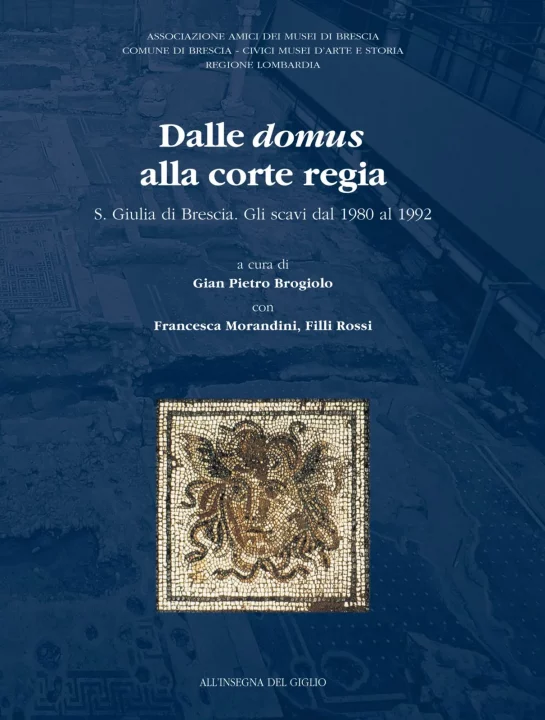From the domus to the royal court
Edited by Gian Pietro Brogiolo, Francesca Morandini and Filli Rossi
All’insegna del Giglio
Six years after the edition of the volume S. Giulia di Brescia: excavations from 1980 to 1992. Pre-Roman, Roman and early medieval finds is now the publication dedicated to the Roman domus highlighted in the research carried out in those years.

Research, we recall, motivated by the restoration work of the monastic complex intended to house the City Museum and which therefore suffered from the needs of planning and construction, but which allowed to reconstruct a significant cross-section of the oldest history of Brescia. These publications and the announced third volume dedicated to the late medieval and Renaissance age give account of the wealth of new data acquired in archaeological investigations and their extraordinary scientific interest.
The study of the complex of Roman houses dealt with in this second volume appears to be of great importance due to the vastness of the area investigated, almost four thousand square meters: a privileged situation, which has not yet been found in Brescia itself, but also in most Roman cities of northern Italy. In addition to the size of the investigated area, another element of particular interest is the location of the block involved in the excavations, in a central part of the city, north of the maximum decumanus of via Musei, next to the public monumental area, a sector therefore destined in the urban fabric for residential buildings of a certain importance.
But the most interesting aspect is the possibility of a study of the buildings in their complete context, as hardly happened in the past, when we dealt only with the elements considered most artistically relevant, such as the mosaic floors, often torn from their seat. and studied in isolation, extrapolating them from the whole, or the decorative wall apparatuses that in the best cases were examined only in the parts that had a greater value for the present representations. Here there was the possibility of a global investigation that tried to reconstruct the buildings in their different rooms, articulated around open spaces or porticoes, taking into account the changes and rearrangements gradually made over time to some parts of the houses. , which until the fifth century appear to be functional and cared for with continuous maintenance. But also the analysis of the subsequent phases, of deconstruction of these buildings, of collapse and demolition and of reconstruction in the same areas, but with different spatial organization, of new buildings in poor techniques, houses or huts with one or two rooms, returns elements fundamental for the interpretation and reconstruction of the city in the early Middle Ages.
The elaboration of the excavation data and the study of the documentation that emerged from the investigations took a long time. For example, we can mention the study of the wall decoration, which required a patient preliminary intervention to recompose the numerous fragments of painted plaster found in a secondary position, sometimes in the phase of collapse of the wall or much more often used in filling. The results of this careful and meticulous work appear to be of great importance and certainly constitute a fundamental basis for future studies on Roman painting in Brescia.
After the construction of the City Museum in Santa Giulia and the opening to the public of the domus dell’Ortaglia in 2003, the publication of the results of the archaeological investigations adds new elements of knowledge of the area of the museum complex. These could be the basis for rethinking in the future, again, a project of museumization of the excavations, covered after their execution for conservation reasons and to allow the completion of the works.
The archaeological potential of the Santa Giulia area and the forensic area, the true heart of the ancient city, is enormous and the interest and commitment of the municipal administration for the enhancement of this area are well evidenced by recent museum interventions and works in progress in the area of the Capitolium and the Theater. The publication of the excavation interventions and the analysis of the evidence that emerged are also part of this perspective of promoting cultural heritage and are the basis for planning future interventions in this which can be considered, at national level, one of the most prestigious areas.
